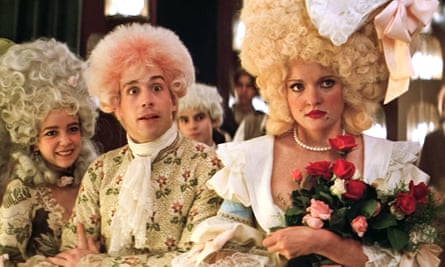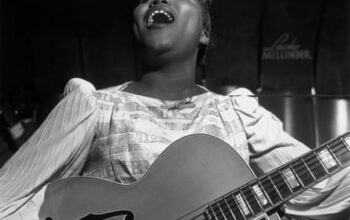Tom Hulce portrayed the role of Wolfgang Amadeus Mozart.
I had a strong desire to play the role of Younger Brother in director Miloš Forman’s previous movie Ragtime, but unfortunately, I had a few unsuccessful meetings with him. However, when I auditioned for Amadeus, he had me read for a full day alongside other actors trying out for different roles. I noticed that he was not very interested in the people I found intriguing, but he was kind to those I thought had no chance. I then made a strategic decision to act like an arrogant and difficult person, which surprisingly caught his attention. After eight hours, he simply said, “You can leave now.”
I attended numerous piano lessons until I could no longer continue. F Murray Abraham, who portrayed Mozart’s competitor Salieri, accompanied me to observe Neville Marriner and the Academy of St Martin in the Fields record at Abbey Road in London. Neville invited me to sit among the orchestra and fully immerse myself in the music.
While being filmed, I would be silently playing keyboards to either music played on location or, if there was talking, through a concealed earpiece. The scenes where I improvised Salieri’s march while speaking over my shoulder and played upside down were especially nerve-wracking. It felt like performing stunts.
John McEnroe served as a role model for me. I sought out individuals who displayed unexpected talents in their behavior. I particularly enjoyed non-traditional hairstyles, but changing my hair color had the most significant impact on my personality. When I dyed it a bright yellow, similar to a New York taxi, I became more outgoing. However, to develop Mozart’s signature laugh, I resorted to drinking Jack Daniel’s whiskey. My friend Miloš informed me that my initial attempt was not extreme enough, so I experimented with countless ideas until I found one that resembled someone I knew. While Mozart was highly intelligent, his laughter could come across as foolish.
Miloš was particularly preoccupied with the scene in which Mozart dictates the requiem to Salieri. This type of scene had never been seen in cinema before, with just two characters reciting musical notation. To demonstrate, we had Neville Marriner and one of his colleagues read the script for us, but it did not turn out well. To enhance the scene, Miloš decided to use a two-camera setup, where one side’s actions were matched with a reaction shot. Without informing Miloš or Murray, I intentionally left out certain information, causing Murray to struggle to keep up. This was my hidden agenda.
Filming in Prague while it was still under communist rule meant we were constantly under surveillance. We’d go out to dinner and let the people who were following us know how long we were going to be in the restaurant. Originally, Mozart’s wife Constanze was to be played by Meg Tilly, and she and I got to stay for a long weekend in the actual apartment where they lived. One day we were playing soccer in the street with the crew and she ripped a tendon. There was no room to move shooting around and she had to be replaced.
Miloš aimed to make the Mozarts feel like foreign Americans in Vienna, and Elizabeth Berridge, who took on the role of Constanze after Meg’s injury, excelled at portraying that. I found it challenging to avoid speaking in an English accent, as it seemed to fit better with writer Peter Shaffer’s style and structure. Strangely, when the film was released, it was the American critics who struggled to accept my American accent. They were familiar with my character from Animal House and saw my portrayal of Mozart as simply the best I could do as an American.

Michael Chandler is a film editor.
I have experience in creating documentaries, so I was not daunted by the large amount of footage. From the beginning, Miloš stated, “If I can do it myself, I don’t need you – I want you to surprise me.” This allowed me to have the flexibility to explore different options.
He requested that I revise the start of the scene, where Salieri loudly calls out Mozart’s name from a window, as it felt too obvious. I discovered several moments of quiet, cobblestoned streets in Prague, and incorporated them with Salieri’s narration. While these shots were not originally planned for use, they enhanced the opening with more emotion.
We encountered a different issue towards the end – we had to transition from the beautiful scene of Mozart’s funeral to Salieri’s conversation with the priest, which served as the conclusion of the film. No matter what we tried, Miloš was dissatisfied. Ultimately, I decided to take a mocking laugh from Salieri’s later dialogue and place it at the beginning, interrupting the emotional moment of people crying, the crescendo of Mozart’s Lacrimosa, and the burial process. This laugh not only insults the audience, but also propels us into the next scene. This showcases our skills as documentarians once again – being able to uncover these small details and repurpose them for our storytelling.
Skip over the advertisement for the newsletter.
after newsletter promotion
I regretfully had to express my dislike for this particular scene, as it was hindering the flow of the film. It took us half a year to reach a rough cut of three and a half hours, and then another six months to trim it down to two and a half hours. Unfortunately, we had to remove several impressive scenes, such as ones featuring Kenneth McMillan as Schlumberg, whose character Mozart’s daughter attempts to teach while being disrupted by misbehaving dogs. Miloš reached out to apologize to him and eventually brought him back for the director’s cut.

Once the film was completed, Miloš suggested that in the last scene, as the elderly Salieri is being pushed through the asylum while accompanied by a lovely piano concerto, we should hear Mozart’s distinctive high-pitched laugh one more time before the credits roll. However, we did not have a suitable recording of the laugh for this moment and had to bring Tom back in. Initially, he struggled to recreate the sound that had come easily during production, but eventually we were able to achieve it.
I believe that the scene in which the dying Mozart dictates his requiem to Salieri is one of the best in film history. One of the moments we used was actually a mistake – there was an issue with the earpiece that transmitted the music to Tom so he could sing at the correct pitch and tempo. However, it ended up working well as it appeared as though Mozart was desperately reaching for something. In reality, Tom was just waiting for his cue.
You were always mindful of the music, whether following its rhythm or going against it, but maintaining its flow so that it remained the main focus. It was the most amazing film experience I’ve ever had. I had the opportunity to collaborate with Miloš, an exceptional talent. I have never witnessed anyone tackle every aspect of film production with such skill.
Source: theguardian.com


